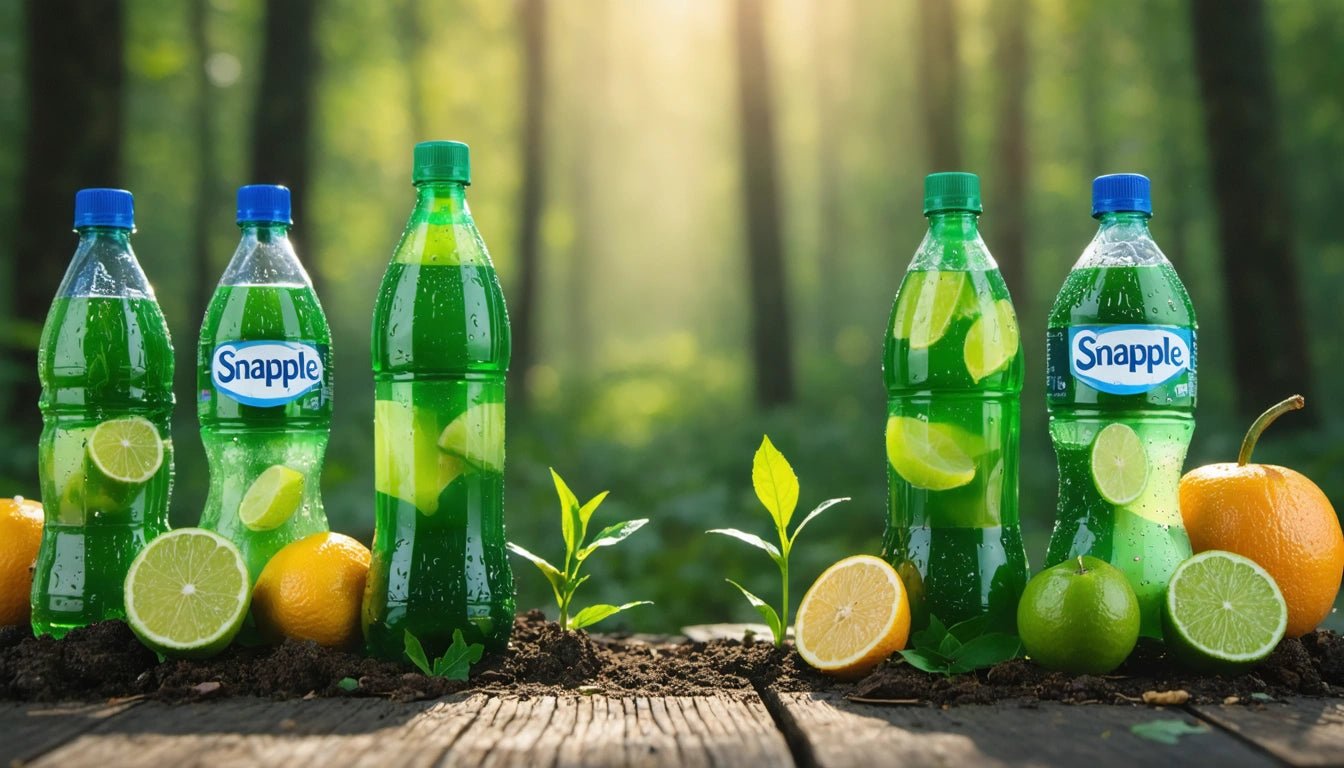Table of Contents
The Truth Behind Snapple's Switch to Plastic: Are the Facts Real?
Snapple, the iconic American beverage company known for its fruity teas and juices, made headlines when it transitioned from its signature glass bottles to plastic containers. This change sparked debates about sustainability, product quality, and even the authenticity of the famous Snapple facts under bottle caps. This comprehensive guide explores when and why Snapple switched to plastic bottles and whether those beloved Snapple facts remain trustworthy.
Snapple's Transition to Plastic: Timeline and Reasons
Snapple began its transition from glass to plastic bottles in 2018, with the complete rollout finalized by 2019. The decision came after Keurig Dr Pepper acquired the brand and implemented several strategic changes to modernize the product line.
Primary Reasons for the Switch
- Weight reduction: Plastic bottles are significantly lighter than glass, reducing shipping costs and carbon emissions during transportation
- Breakage prevention: Plastic containers eliminate the risk of shattering, a common issue with glass bottles
- Consumer convenience: Resealable plastic bottles are more portable and suitable for active lifestyles
- Manufacturing efficiency: Plastic production lines can operate at higher speeds with fewer interruptions
According to industry experts, this shift aligned with broader plastic packaging trends seen across the beverage industry. Many consumers wondered about the timing and questioned if this was primarily a cost-cutting measure rather than an improvement.
Are Snapple Facts Real? Separating Truth from Fiction
One of Snapple's most distinctive marketing features has been the "Real Facts" printed inside their bottle caps. With over 1,500 different facts circulated since the program began in 2002, consumers often wonder: are Snapple facts real?
The answer is mostly yes, but with important caveats. Snapple does research their facts, but several have been debunked or identified as oversimplifications over the years. The company occasionally updates their fact database to correct inaccuracies. Some examples of contested facts include:
- Fact #12: "The average person spends two weeks of its life waiting for a traffic light to change" (difficult to verify and likely an estimate)
- Fact #31: "The average human will eat an average of eight spiders while sleeping" (widely debunked urban myth)
- Fact #73: "A goldfish's memory span is three seconds" (scientifically disproven; goldfish can remember for months)
Interestingly, the switch to plastic didn't affect the "Real Facts" program, which continued with the new packaging. The facts remain printed inside the bottle caps, maintaining this nostalgic brand element despite the container material change.
Environmental Impact of Snapple's Packaging Change
The environmental implications of Snapple's switch to plastic have been significant and multifaceted:
Carbon Footprint Considerations
While plastic bottles reduce transportation emissions due to their lighter weight, the overall environmental impact of plastic production remains concerning. The manufacturing process for PET plastic (used in Snapple bottles) is energy-intensive and petroleum-based.
Recycling Challenges
Snapple's plastic bottles are technically recyclable, but real-world recycling rates for plastic beverages containers hover around 30% in the United States. Glass, while heavier, has higher recycling efficiency when properly collected. The shift mirrors similar packaging changes seen when Sprite changed their iconic green bottles to clear plastic for improved recyclability.
Packaging specialists who work with large format packaging solutions note that the beverage industry's material choices influence broader packaging trends across multiple sectors, including food, cosmetics, and cannabis products.
Consumer Reaction and Brand Perception Changes
The transition to plastic bottles generated mixed reactions from Snapple enthusiasts:
Nostalgia Factor
Many longtime customers expressed disappointment about losing the distinctive glass bottle experience, including the satisfying "pop" sound when opening. Social media campaigns and petitions emerged, asking Snapple to bring back glass bottles.
Taste Perception
Some consumers reported perceived taste differences after the switch, though Snapple maintained that the formula remained unchanged. This phenomenon highlights the psychological component of packaging in flavor perception, similar to how McDonald's packaging updates affected customer experience.
Brand Loyalty Impact
Market research indicated a temporary dip in brand loyalty metrics following the transition, particularly among consumers aged 35-55 who had stronger associations with the original glass packaging. However, younger demographics showed less resistance to the change.
Snapple attempted to mitigate negative reactions by emphasizing the practical benefits of plastic bottles and maintaining iconic brand elements like the facts under the cap and the distinctive label design.
Packaging Industry Trends: Lessons from Snapple's Decision
Snapple's switch reflects broader industry movements that continue to shape packaging decisions today:
Balance of Sustainability and Practicality
Companies increasingly face the challenge of balancing environmental concerns with practical considerations like weight, durability, and consumer convenience. Many are exploring eco-friendly alternatives to conventional plastic, including bioplastics and innovative composite materials.
Transparency in Manufacturing Decisions
Modern consumers expect brands to be forthcoming about packaging changes and their environmental impact. Snapple faced criticism for framing their switch primarily as an improvement rather than acknowledging the cost-saving aspects.
The beverage industry continues to experiment with packaging innovations, including aluminum bottles, paperboard containers, and enhanced recycling programs. These developments suggest that Snapple and similar brands may continue evolving their packaging strategies as technology and consumer preferences change.
While the debate around Snapple's switch to plastic continues, understanding the complex factors behind packaging decisions helps consumers make informed choices about the products they purchase and the environmental impact of those choices.



















